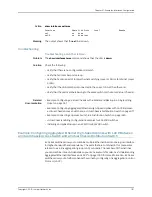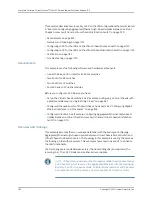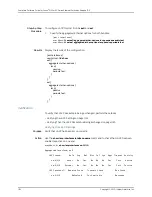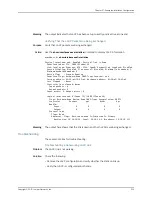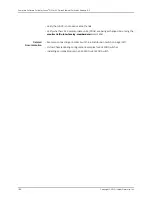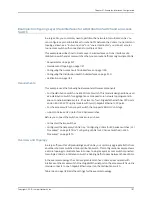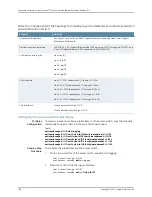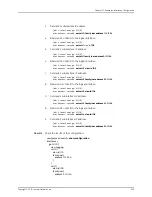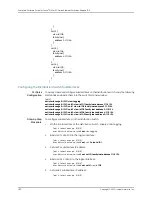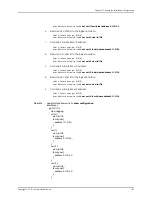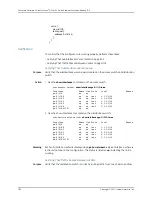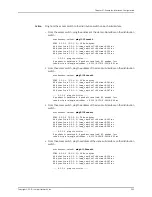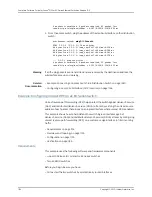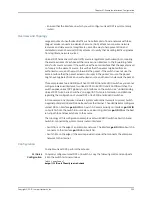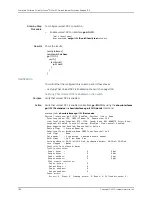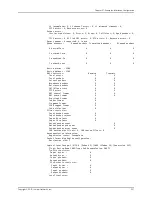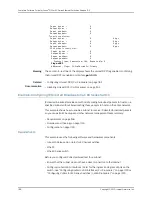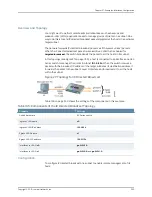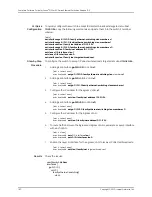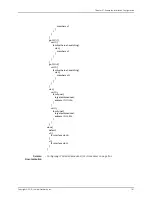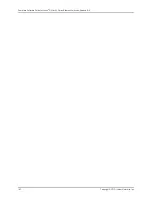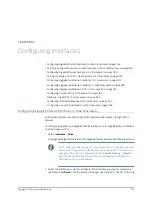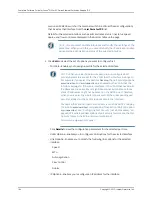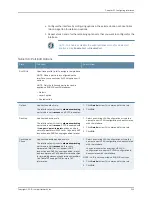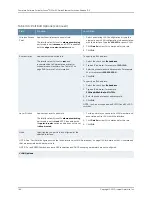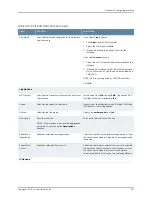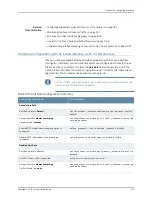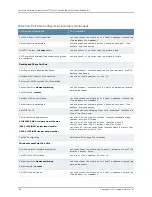
•
Ensured that the interface on which you will configure unicast RPF is symmetrically
routed.
Overview and Topology
Large amounts of unauthorized traffic such as attempts to flood a network with fake
(bogus) service requests in a denial-of-service (DoS) attack can consume network
resources and deny service to legitimate users. One way to help prevent DoS and
distributed denial-of-service (DDoS) attacks is to verify that incoming traffic originates
from legitimate network sources.
Unicast RPF helps ensure that a traffic source is legitimate (authorized) by comparing
the source address of each packet that arrives on an interface to the forwarding-table
entry for its source address. If the switch uses the same interface that the packet arrived
on to reply to the packet's source, this verifies that the packet originated from an
authorized source, and the switch forwards the packet. If the switch does not use the
same interface that the packet arrived on to reply to the packet's source, the packet
might have originated from an unauthorized source, and the switch discards the packet.
This example uses two EX8200 switches. On EX3200 and EX4200 switches, you cannot
configure individual interfaces for unicast RPF. On EX3200 and EX4200 switches, the
switch applies unicast RPF globally to all interfaces on the switch. See “Understanding
Unicast RPF for EX Series Switches” on page 1105 for more information on limitations
regarding the configuration of unicast RPF on EX3200 and EX4200 switches.
In this example, an enterprise network's system administrator wants to protect Switch
A against potential DoS and DDoS attacks from the Internet. The administrator configures
unicast RPF on interface
ge-1/0/10
on Switch A. Packets arriving on interface
ge-1/0/10
on Switch A from the Switch B source also use incoming interface
ge-1/0/10
as the best
return path to send packets back to the source.
The topology of this configuration example uses two EX8200 switches, Switch A and
Switch B, connected by symmetrically routed interfaces:
•
Switch A is on the edge of an enterprise network. The interface
ge-1/0/10
on Switch A
connects to the interface
ge-1/0/5
on Switch B.
•
Switch B is on the edge of the service provider network that connects the enterprise
network to the Internet.
Configuration
To enable unicast RPF, perform these tasks:
CLI Quick
Configuration
To quickly configure unicast RPF on Switch A, copy the following command and paste
it into the switch terminal window:
[edit interfaces]
set ge-1/0/10 unit 0 family inet rpf-check
1135
Copyright © 2010, Juniper Networks, Inc.
Chapter 51: Examples: Interfaces Configuration
Summary of Contents for JUNOS OS 10.3 - SOFTWARE
Page 325: ...CHAPTER 17 Operational Mode Commands for System Setup 229 Copyright 2010 Juniper Networks Inc ...
Page 1323: ...CHAPTER 56 Operational Mode Commands for Interfaces 1227 Copyright 2010 Juniper Networks Inc ...
Page 2841: ...CHAPTER 86 Operational Commands for 802 1X 2745 Copyright 2010 Juniper Networks Inc ...
Page 3367: ...CHAPTER 113 Operational Mode Commands for CoS 3271 Copyright 2010 Juniper Networks Inc ...
Page 3435: ...CHAPTER 120 Operational Mode Commands for PoE 3339 Copyright 2010 Juniper Networks Inc ...
Page 3529: ...CHAPTER 126 Operational Mode Commands for MPLS 3433 Copyright 2010 Juniper Networks Inc ...

